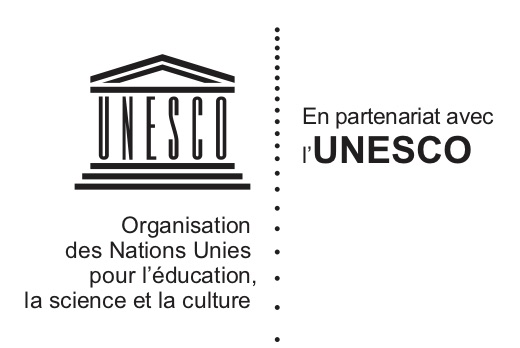State responsibility/responsabilité internationale des Etats
Balangiga Bells – Philippines and United States
The Balangiga Bells were removed in 1901 from the parish church of San Lorenzo de Martir in Balangiga, Eastern Samar, in the Philippines, by soldiers of the United States Armed Forces. The three bells returned to the Philippines in 2018 following the amendment of the law of the United States that originally prevented their return.
Baldin Collection – Kunsthalle Bremen, Germany and State Hermitage Museum Russia
In the aftermath of the Second World War, the Soviet Army Captain Victor Baldin brought to Moscow many artworks of the collection of the Kunsthalle Bremen (Bremen Art Museum). The dispute for the restitution of the so-called “Baldin Collection” is ongoing and has grown to one of the most debated cases between Germany and Russia.
Bible et fouet Witbooi – Namibie et Allemagne
En 2013, la Namibie a adressé à l’Allemagne une requête en restitution d’une bible et d’un fouet witbooi. Ces objets, dont était propriétaire le héros national namibien Hendrick Witbooi, ont été spoliés par les troupes allemandes en 1893, lors d’une attaque menée par ces dernières contre la ville de Hornkranz afin de taire les soulèvements de la population contre l’occupation militaire allemande. Après des années de négociation, l’État allemand a finalement accepté de rendre les objets demandés. La restitution a eu lieu le 28 février 2019, à Gibeon, berceau historique de la communauté witbooi.
Guelph Treasure – Alan Philipp, Gerald G. Stiebel and Jed R. Leiber v. Germany and Prussian Cultural Heritage Foundation
A collection of medieval ecclesiastical art is claimed by the heirs of three Jewish dealers, who allege that the collection was sold under duress during the Nazi era. After an unsuccessful conciliation in front of Germany’s Advisory Commission, the claim is being litigated before the courts of the United States. On 3 February 2021, the Supreme Court of the United States ruled in favour of Germany on the interpretation of the expropriation exception in the Foreign Sovereign Immunities Act.
Herzog Collection – De Csepel et al. v. Republic of Hungary et al.
The “Herzog Collection” was originally an assembly of over two thousand works of art, collected by Baron Mór Lipót Herzog in the early 1900s. During World War II, the collection was seized by the Hungarian government, under Nazi orders. For the last seven decades, the Herzog Heirs have attempted to reclaim the Collection from the Republic of Hungary, without success. Now, the Herzog Heirs are taking their claim to the United States Supreme Court.
Marienkirche Window Panels – Germany and Russia, State Hermitage Museum, Pushkin State Museum of Fine Arts
In 1997, 111 panels originally forming a window of the St. Marienkirche (St Mary Church) in Frankfurt-on-the-Oder were located in the Russian State Hermitage Museum. They were brought to Russia by Soviet troops following World War II. In 2001, after difficult negotiations, Russia agreed to return the panels to Germany. In exchange, the German Government offered to finance the reconstruction of the Russian Orthodox Church of the Dormition of the Mother of God located near Novgorod. A second group of 6 panels found in 2005 in the Pushkin State Museum of Fine Arts was returned to Germany in 2008.
Obélisque d’Axoum – Italie et Ethiopie
En 1937, Mussolini ordonne l’enlèvement de l’obélisque d’Axoum et son transport en Italie. Il faudra attendre 2007 pour que l’obélisque retrouve le site d’Axoum.
Tête du roi Badu Bonsu II – Ghana et Pays-Bas
En 1838, Badu Bonsu II, roi des Ahanta du Ghana, est condamné à mort par les autorités coloniales néerlandaises. Il sera pendu et décapité. Sa tête sera transportée aux Pays-Bas. Par la suite, un accord de restitution de cette tête sera signé à La Haye entre les gouvernements néerlandais et ghanéen ainsi qu’un représentant de la tribu Ahanta.
Trente-sept tableaux spoliés par le régime nazi – Paul Rosenberg c. Théodore Fischer et consorts
En 1946, Paul Rosenberg, célèbre marchand d’art français et israélite, ouvre une action en restitution de trente-sept tableaux de maître dont il a été spolié en France, durant l’occupation allemande, par le régime nazi, et qui se sont retrouvés en Suisse à la fin de la guerre. L’action est portée devant la Chambre des actions en revendication de biens spoliés, chambre spéciale et extraordinaire du Tribunal fédéral (TF). En 1948, le TF admet le recours et condamne les défendeurs à restituer les tableaux litigieux à P. Rosenberg.
Two Bronze Animal Heads – China and Pierre Bergé
In February of 2009, Christie’s offered at auction two 18th-century bronze fountainheads – a rabbit and a rat – owned by the estate of Yves Saint Laurent and his longtime-partner Pierre Bergé. Stolen from the Old Summer Palace by British and French forces during the Second Opium War in 1860, the two heads’ sale provoked controversial international debate, inspiring a Chinese national to bid upon the bronzes at auction and refuse payment. In June of 2013, François-Henri Pinault, owner of Christie’s, returned to China the fountainheads in an effort to strengthen diplomatic and trade relations between France and China.
Venus of Cyrene – Italy and Libya
In 1913, Italian soldiers deployed at Cyrene, Libya, found a headless marble sculpture, commonly known today as the “Venus of Cyrene”. In 1915, the statue was shipped to Italy, where it was placed on display in the Museo Nazionale delle Terme of Rome.
Document Actions










